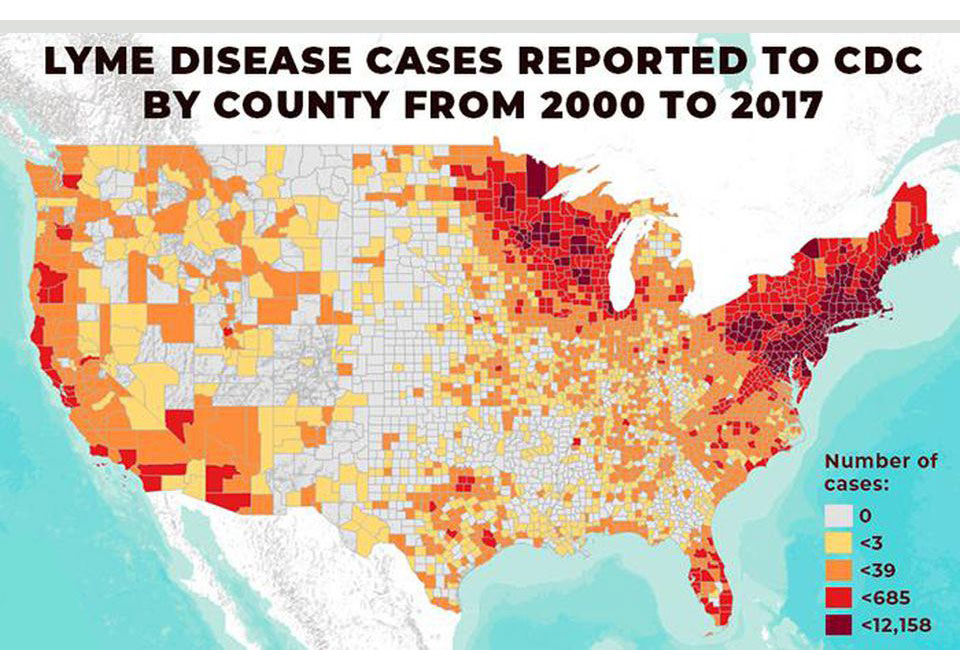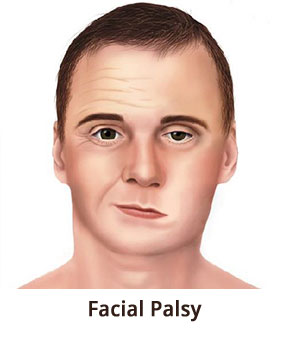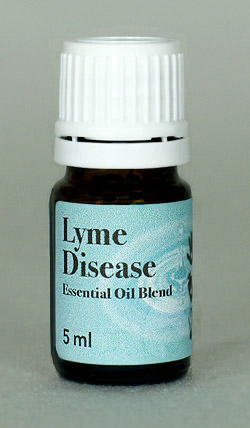Lyme Disease Symptoms and Treatment
How Do You Get Lyme Disease?
Lyme Disease Symptoms
How Do You Treat Lyme Disease?
Essential Oils for Lyme Disease
What Is Lyme Disease?
Lyme disease is a serious, potentially life-changing infectious disease caused by the bacterium Borrelia burgdorferi when transmitted from the bite of an infected tick.
▶︎ If you suspect you may have Lyme disease or other tickborne illness, see a doctor as quickly as possible for diagnosis and treatment.
Across large swaths of the United States, including the Midwest, Northeast, and mid-Atlantic regions, as well as southeastern Canada, Lyme disease is primarily spread via the deer tick (also known as the black-legged tick or bear tick, Ixodes scapularis).

Along the Pacific Coast, Lyme disease is primarily spread by the western black-legged tick (Ixodes pacificus).
According to the Centers for Disease Control (CDC), cases of Lyme and other tickborne diseases have been steadily on the rise in recent years. Reported cases of Lyme disease in the United States have tripled since the late 1990s.
It is estimated that approximately 300,000 people are diagnosed with Lyme disease each year in the US, with these cases being most concentrated in the Northeast and upper Midwest.
New species of disease-carrying ticks are being found in an expanding geographic range, and new tickborne illnesses are being discovered (transmitted by other bacterial species such as Borrelia mayonii).
Thus it is becoming ever more important for everyone to know how to prevent tick bites, how to recognize the signs and symptoms of Lyme and other infectious tickborne diseases such as babesiosis and ehrlichiosis, and how to treat these diseases.
How Do You Get Lyme Disease?
Lyme disease is spread through the bite of an infected tick.
Your risk of contracting Lyme disease is higher if you live in or spend time in grassy and/or heavily wooded areas where deer tick or western black-legged tick populations may thrive.
Contrary to common belief, ticks can't fly or jump. Instead, they wait for a host, resting on the tips of grasses and leaves. When a host (human or otherwise) brushes the spot where a tick is waiting, the tick attempts to quickly climb aboard. If successful, it then finds a suitable place to attach to and bite its host.
Ticks can attach themselves to any part of your body, often in the scalp, armpits, or groin.
In general, ticks have to be attached to the body for at least 36 hours before the Lyme disease bacterium can be transmitted. This is why it's so important to check yourself for ticks daily if you spend time outside, especially if you live in an area where ticks are common.
Finding and removing a tick as quickly as possible is critical in averting the potential transmission of the Lyme bacterium or other tickborne germs.
In addition to seeking out human hosts, ticks can feed on other mammals, birds, reptiles, and amphibians. (Most ticks prefer to have a different host animal at each stage of their life.)
Initial Lyme Disease Symptoms
Early signs and symptoms of Lyme disease, which can appear anywhere from 3 to 30 days after a tick bite, include:

- The classic "bull's eye" rash originating at the site of the tick bite will show up on most infected people about 1 week after the tick bite. This expanding rash is also known as erythema migrans (EM).
- Fever
- Chills
- Headache
- Fatigue
- Neck stiffness
- Muscle aches
- Swollen lymph nodes
Important: Although the CDC estimates that 70-80% of those infected with Lyme disease develop the bull's eye rash, it will not appear on everyone, so do not assume that you cannot have Lyme disease if you have other flu-like symptoms but not the rash.
Also note: An erythema migrans (EM) rash does not have to be circular. The rash can become very large (up to 16 inches in diameter) with diffuse edges. There may be multiple rash locations, not just one. The rash will not always form at the site of the tick bite.
If you are experiencing any of the symptoms listed above and suspect Lyme, whether or not you have located an attached or unattached tick on your body, promptly see a doctor for diagnosis.
Additional Symptoms in Untreated Lyme Disease
If Lyme disease goes untreated, additional and more severe symptoms can occur, including:

- Intense headaches
- Paralysis of facial muscles (palsy)
- Severe joint and muscle pain and stiffness
- Rashes on other areas of your body
- Heart palpitations
- Brain inflammation
Source: Centers for Disease Control (CDC)
Lyme Disease Treatment and Support
▶︎ If you suspect you may have Lyme disease or other tickborne illness, see a doctor as quickly as possible for diagnosis and treatment.
If you are diagnosed with Lyme disease early, antibiotics can often effectively treat the disease.
However, patients who continue to experience Lyme disease symptoms after antibiotic treatment is completed, or who have chronic Lyme disease (also known as post-treatment Lyme disease syndrome), may need to turn to other solutions, since long-term antibiotic use can be ineffective, have a harmful impact on your body (especially on your gut microbiome), and weaken your immune system.
It's important to support the health of your entire body when battling Lyme disease and/or related infections. The disease itself plus the antibiotic treatment can take a heavy toll on your body.
- During and after your initial antibiotic treatment, I recommend trying to boost your immune system with supplements such as Transfer Factor Multi-Immune or Researched Nutritionals BLt.
- Taking supplements such as CoQ10 Power™ and Curcumin Pure™ can help alleviate symptoms of Lyme such as muscle pain and swelling.
- Taking probiotics such as Ortho Biotic can help improve the health of your gut and strengthen your immune system during and after taking antibiotics.
- I recommend a targeted rotation of essential oils (see below).
Essential Oils for Lyme Disease

A study conducted by Johns Hopkins University found evidence that certain essential oils can help eradicate the Borrelia burgdorferi bacterium that causes Lyme disease.
These identified essential oils are garlic, allspice, cumin, palmarosa, myrrh, hydacheim, amyris, thyme, Litsea cubeba, lemon eucalyptus, and cinnamon bark.
Additionally, in my clinical experience treating patients with Lyme disease, I have found that marjoram, tangerine, frankincense, geranium, and oregano can also be effective support tools.
Rotating several of the essential oils mentioned above in order to target a Lyme infection in layers may be a beneficial strategy for many Lyme patients.

Please consider these recommended protocols for Lyme disease support using essential oils.
OHN Lyme Disease Essential Oil Blend
Using information gathered from scientific studies and my 20+ years of working with patients suffering from Lyme disease, I have designed this custom essential oil blend to target and help eliminate the B. burgdorferi bacterium (the bacterium that cause Lyme disease) by penetrating the biofilms that the bacterium produces to protect itself from antibiotics.
▶︎ VIEW PRODUCT DETAILS
This custom blend may be especially effective for those suffering from chronic Lyme disease (also known as post-treatment Lyme disease syndrome), as long-term antibiotic use can be ineffective and harmful to your immune system and gut microbiome.
Essential Oils for Lyme Disease
Kristina Amelong, CCT, CNC discusses how to use essential oils to help you heal from chronic Lyme disease. She outlines what Lyme disease is, common symptoms of the disease, and ways in which you can support your body to manage symptoms and heal from chronic Lyme disease in addition to antibiotic treatment, which is generally not effective over the longer term.
Hair Tissue Mineral Analysis (HTMA)
Discussing the recent increase in cases of Lyme Disease, Dr. Josh Axe writes that "Lyme disease is gaining ground, following the path of a perfect storm: elevated burden of environmental toxins, rising stress levels, and numerous other inflammatory instigators, all exponentially compounding each other."
Key health factors highlighted by Dr. Axe can be measured through a hair tissue mineral analysis (HTMA) test kit offered through Optimal Health Network and its lab partner, Analytical Research Labs, Inc. The results of an HTMA can help you create a more effective individualized program to support you in healing from Lyme disease.
By Kristina Amelong, CCT, CNC
I-ACT-Certified Colon Hydrotherapist
Certified Nutritional Consultant
DISCLAIMER: The material presented on this page is for informational purposes only and is not a substitute for medical advice, diagnosis, or prescribing from a licensed healthcare professional. Consult with a licensed healthcare professional before altering or discontinuing any current medications, treatment, or care, or starting any diet, exercise, cleansing, or supplementation program, or if you have or suspect you might have a health condition that requires medical attention.

▶︎ Need more detailed Lyme disease support?
Personal Health Consultations with
Kristina Amelong, CCT, CNC
For personalized support with your home health program, I would be happy to assist via a scheduled phone consultation. I charge an affordable $2.25 per minute, for as many or as few minutes as you need!
First complete any relevant sections of my secure online intake form. Upon submitting the form, you will be prompted to schedule a consultation time with me via my online booking system.
If you are an international client who would like to use WhatsApp for your scheduled consultation, please email us for instructions on how to contact me at the time of your consultation.